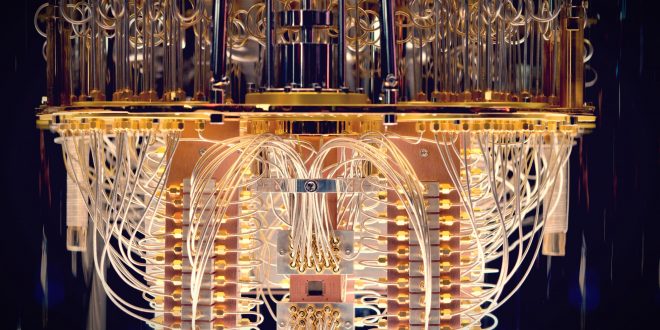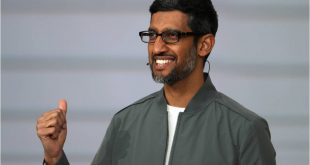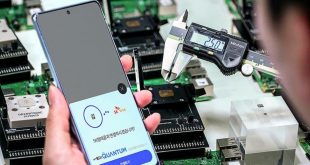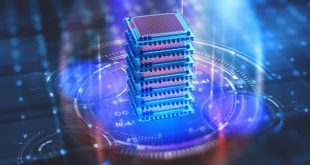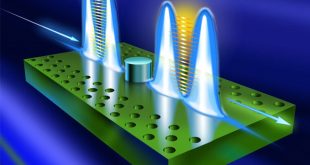Quantum computing: The quantum theory of computation has given birth to some of the most profound ideas in all of physics. And its study has been an active area of research for many decades. Richard Feynman hypothesized in 1995 that quantum computers are maybe even more efficient than conventional computers.
This came as a shock to many in the field of classical computation. But it soon became apparent that quantum computing was worth serious attention. The study of the theory of computation itself has spawned new areas of study. In particular, quantum complexity theory has emerged to investigate the problems of classical computing.
In contrast, quantum algorithms were born from the need for more efficient ways of performing classical computation, specifically to improve the computational speed of Shor’s algorithm. While Feynman’s work is still largely unverified, quantum algorithms have become increasingly precise and have yielded a significant speedup.
Quantum algorithms also lead to a new way to think about the nature of time, which is perhaps the most significant conceptual barrier to studying quantum computing. This new model for time means that quantum mechanics. As understood by many theorists, requires a theory of computation that is inherently different from classical.
What is quantum computing?
Using quantum computing, we can understand the atomic and subatomic behavior of energy and matter. A quantum computer is one that uses the principles of quantum theory to develop computer hardware and software. Information is presently encoded in bits with the values 1 or 0, limiting the capabilities of computers.
As opposed to conventional computing, quantum computing makes use of quantum bits. Essentially, it utilizes the characteristic of subatomic particles, where they can exist in two states simultaneously, 1 and 0, namely, the 1 and the 0.
A Quantum Computer’s Overview
This quantum computer operates by utilizing both superposition and entanglement, which are both quantum physics fundamentals. Because of the overall increase in performance, quantum computers can use considerably less energy than traditional computers. Quantum computing started to take off in the 1980s. When it came to solving specific computer issues, quantum processes were more productive than their conventional equivalents.
Quantum computing might significantly influence banking, military matters, learning, drug research, aircraft design, utility fusion power, polymers design, artificial intelligence (AI), & Massive Data search. Because of Quantum Computer’s great promise and forecasted market penetration, IBM, Google, D-Waves Systems, Aliexpress, Microsoft, Huawei, Intel, Airbus, HP, Toshiba, Toyota, Nokia, NEC, Raytheon, SpaceX, Rigetti, Biogen, Mazda, and Amgen have all expressed interest in working in the sector of quantum computing.
How Do Quantum Computers Work?
In theory, a “universal” quantum computer would have the ability to execute all functions that any other general-purpose computer can do. The quantum computer has one advantage over a regular computer. Unlike conventional computers, quantum computers use quantum mechanics to perform certain functions. Quantum mechanics states that any object, including a particle and a photon, may have the value of one or a zero at any given time.
On the other hand, a conventional computer is bound by the laws of classical physics to process only classical bits. It’s very rare that you encounter quantum physics in your everyday life. As a result, it is often hard to figure out how it applies to today’s world. The quantum computer also has disadvantages. It operates at room temperature, which means that its computing speed can vary considerably. It is also an open question as to whether such devices can be built.
As our quantum computer grows in size and complexity, we can expect many future projects to use quantum computing. But, before you go searching for a “quantum” computer to help solve the world’s problems, think about these critical questions first.
Quantum computers: How Do They Work?
A universal quantum computer works by using qubits – quantum bits – to store data. As a convention, the zero is represented by |0, and the one by 1. The computer is universal because any function computed on a conventional computer can also be calculated on the quantum computer.
What exactly does this mean?
A program that computes a function such as a matrix multiply is represented by a sequence of binary numbers in an ordinary computer. In the quantum computer, a program to compute a function like sorting a sequence of numbers also consists of binary numbers but is represented by a series of qubits.
The program is written in a quantum programming language, typically in “quantum notation.” This notation is a kind of programming language in which some operations have different names. For example, the operator XOR (exclusive OR) is called “CNOT” (controlled-NOT). A quantum programming language often includes instructions for the quantum computing processor and simulating conventional algorithms on a classical computer.
How are qubits stored?
As in the conventional computer. The memory of a quantum computer is made up of bits. The difference is that instead of ordinary bits, a quantum computer uses qubits. In this approach, a qubit is a unit of quantum information, much as a standard bit is a unit of classical knowledge.
Just as in the conventional computer, each qubit has two states: 0 and 1. However, a qubit does not mean simply a particle in the form of 0 or 1. In a quantum computer, a qubit can be in both states simultaneously and still is represented as a unit of quantum information.
Because of the concept of superposition in quantum physics, particles can exist in even more than a single state at the same time.” The 0 and 1 states are superposed in a qubit.
However, a qubit need not be in a superposition of |0 and |1 at all times. Superposition can be created by coupling a qubit to an environment or environment-like phenomenon. For example, when a photon is sent into the vacuum, it is sent out in two directions at once.
These two directions are the “0” and “1” states for one of the two qubits that describe the photon. In this way, two states are superposed. The photon becomes the qubit for both states simultaneously. And, in this way, an environment is converted into a quantum memory.
Types of quantum computers
IBM believes there seem to be 3 kinds of quantum computers that are feasible. D-Wave, a Canadian business, has efficiently and effectively built the quantum annealer, although it is impossible to discern if this has any true “quantumness” so far in this.
And Google gave credence to this theory in December 2015, whenever it published tests demonstrating that its D-Wave quantum computer solved particular, complex tasks 3,600 x quicker than a supercomputer. Experts, on the other hand, remain dubious of these assertions. Similar objections also shed new light on quantum annealers’ fundamental weakness.
Again, they can only which built to tackle extremely particular optimization issues and have restricted universal applicability. The universal quantum, which might allow for enormously quicker computations with more specificity, is the ultimate goal of quantum computing.
Furthermore, constructing such a gadget presents several significant technological hurdles. Quantum particles are incredibly demanding, and even the slightest disturbance from light or sound can cause mistakes in the computing operation. Calculating at accelerated speed is useless if the calculations are wrong.
An object must be held in a superposition state for a specific time to enable quantum computers to function. Superpositions collide with measured materials, known as decoherence, and they disappear from their in-between state, becoming a plain classical bit.
While making quantum states easier to read, devices need to shield them from decoherence. And, it is being approached differently from various angles, whether through quantum techniques or a more extraordinary ability to spot errors.
Quantum computing supremacy
That is the stage at which a quantum computer can finish a numerical computation that is manifestly well beyond the most sophisticated supercomputer’s capabilities.
This is currently unknown. However, many qubits will be necessary to accomplish this because academics are constantly developing new algorithms to improve the efficiency of classical computers while supercomputing technology is improving.
However, researchers and businesses are vying for the title, performing tests against many of the largest and most significant sophisticated supercomputers. Quantum computers uniquely analyze data. A quantum computer uses qubits, which might be either 1 or 0 at nearly the same time, which are not like transistors, which are either 1 or 0.
The amount of qubits connected exponentially improves quantum computing capability. However, combining additional transistors boosts power just proportionally. When everyday tasks require a computer, a classic computer is the best option. In the meantime, quantum computers are suitable for conducting simulations and statistical analyses, including those used in chemical or medicinal trials.
Unfortunately, such computers must which maintained extremely cold. They are also far more costly and complex to construct. Expanding memory to computers is an example of a traditional computing advancement. Furthermore, quantum computers aid in the resolution of increasingly complex issues. Although quantum computers cannot operate Microsoft Word better or quicker, they can quickly solve complicated problems.
For instance, Google’s in-development quantum computer might aid in various operations, including speeding up machine learning training or creating more power-efficient batteries. There is much disagreement in the scholarly community regarding how significant reaching this landmark will be. But instead of waiting for dominance to which proclaimed, businesses such as IBM, Rigetti, & D-Wave, a Canadian startup. Also are experimenting with quantum computers.
And Chinese companies such as Alibaba are also providing accessibility to quantum devices. Some companies purchase quantum computers, and others use those readily accessible through cloud computing technology. A quantum computer can handle any task for the time being with classical technology. When quantum computers perform better than their classical counterparts. They are said to be quantum supreme.
Several companies, including IBM and Google, say we may build more accurate devices as they cram more qubits into devices. Quantum computers don’t convince everyone that they’re worth the effort. There is a belief among some mathematicians that quantum computing is virtually impossible to achieve.
In summary
In terms of how it operates and what it can do, quantum computing differs from classical computing. While quantum computers use qubits, representing either a 1 or a 0, classical computers employ transistors, which can only store a 1 or 0. Quantum computing has become much more powerful, enabling it to efficiently process large data sets and perform complex simulations. As of yet, no commercial quantum computer has been developed.
Quantum Computer: FAQs
Often these quantum computers presently use fewer than 100 qubits. Yet, industry titans like IBM and Google are rushing to boost that amount to develop a powerful quantum computer as soon as feasible.
The world could be changed by quantum computing. It could revolutionize communication and artificial intelligence, and it could transform medicine.
Several top tech companies are racing to build a reliable quantum computer. There is no doubt that China has invested numerous trillions of dollars in these areas.
Mark Kubin of California at Berkeley, Neil Gershenfeld of the Massachusetts Institute of Technology (MIT), and Isaac Chuang. They unveiled the first quantum computer in 1998 (2-qubit) capable of reading any data and supplying a solution.
 Next Tech Magazine Get The Latest Technology Updates
Next Tech Magazine Get The Latest Technology Updates
